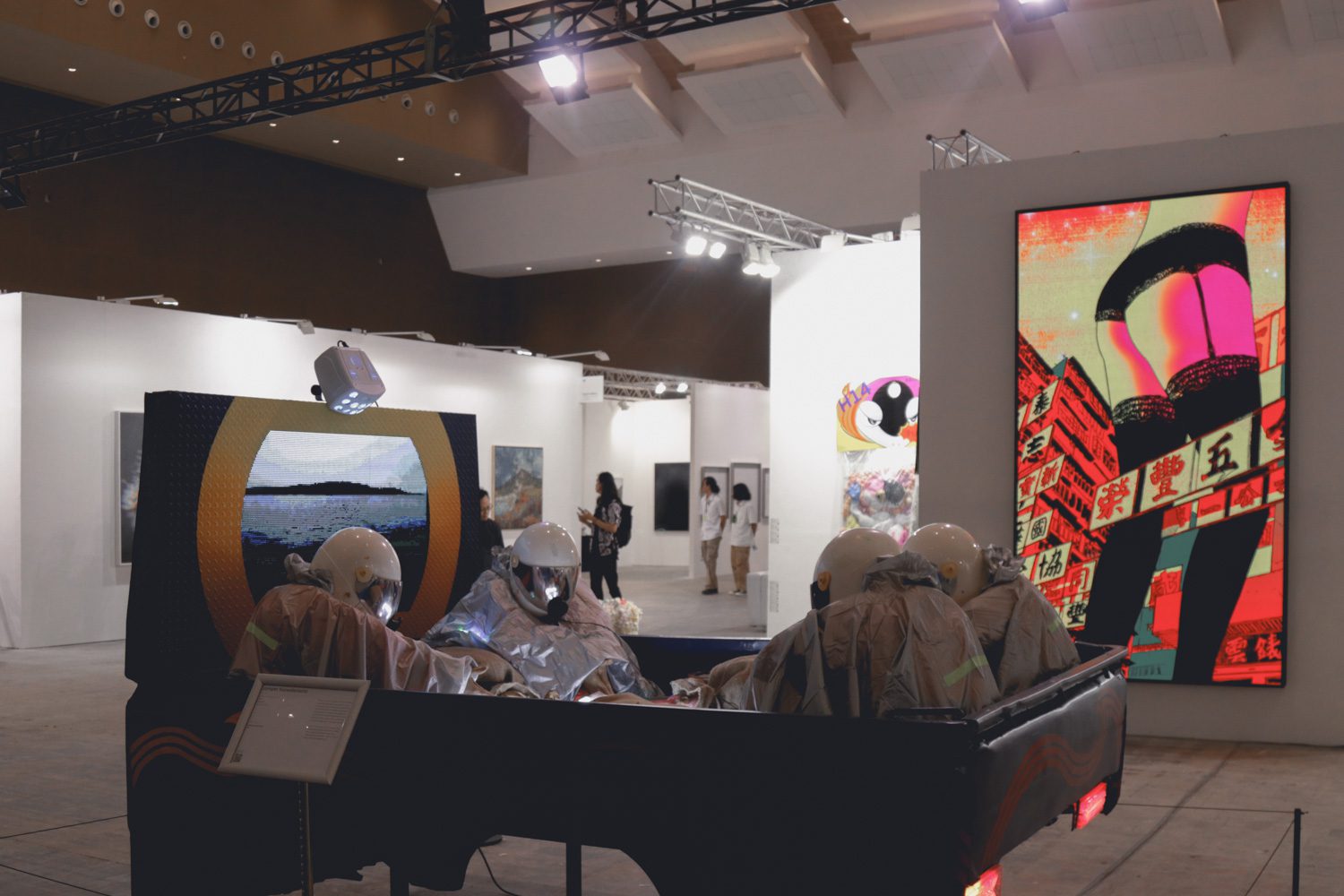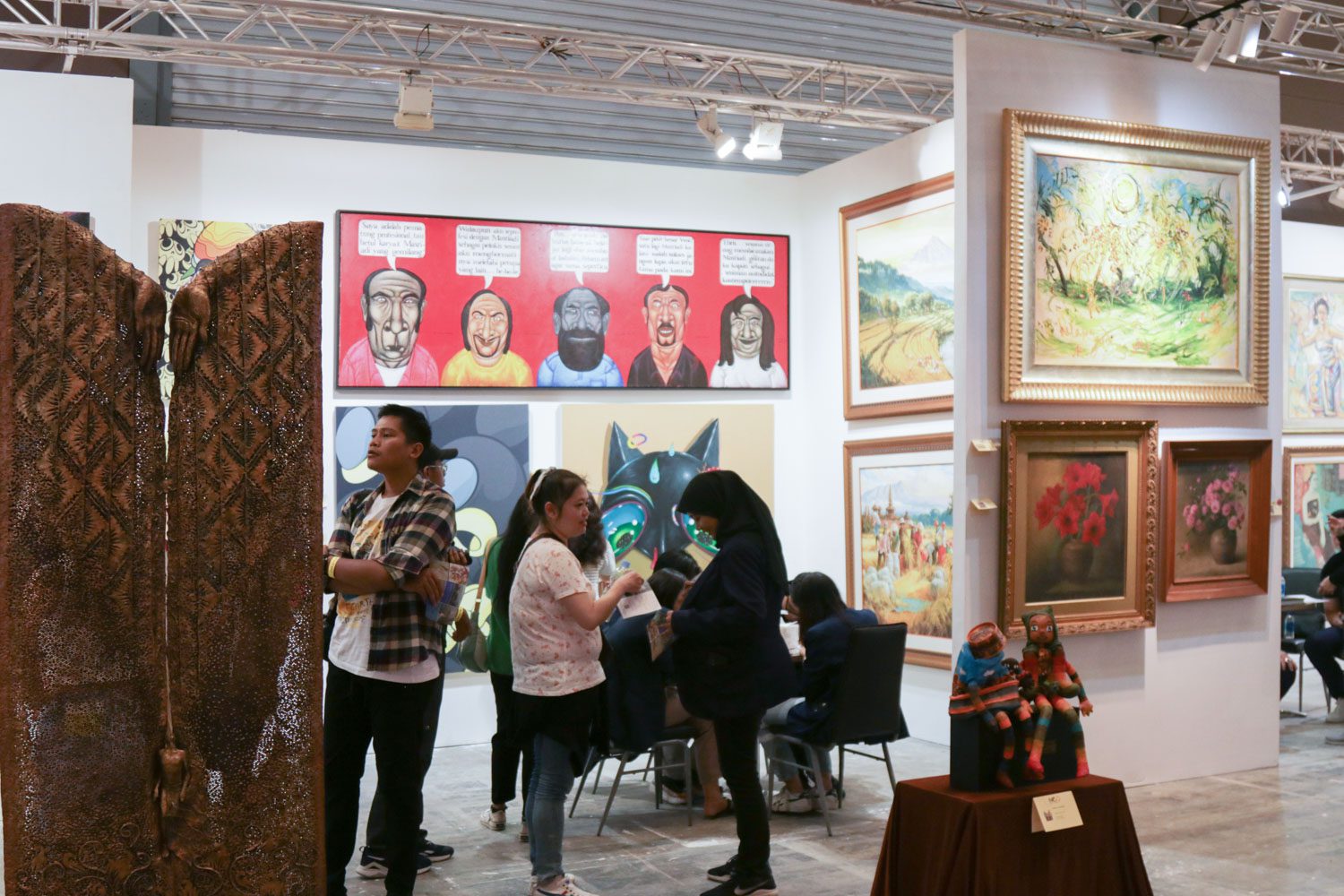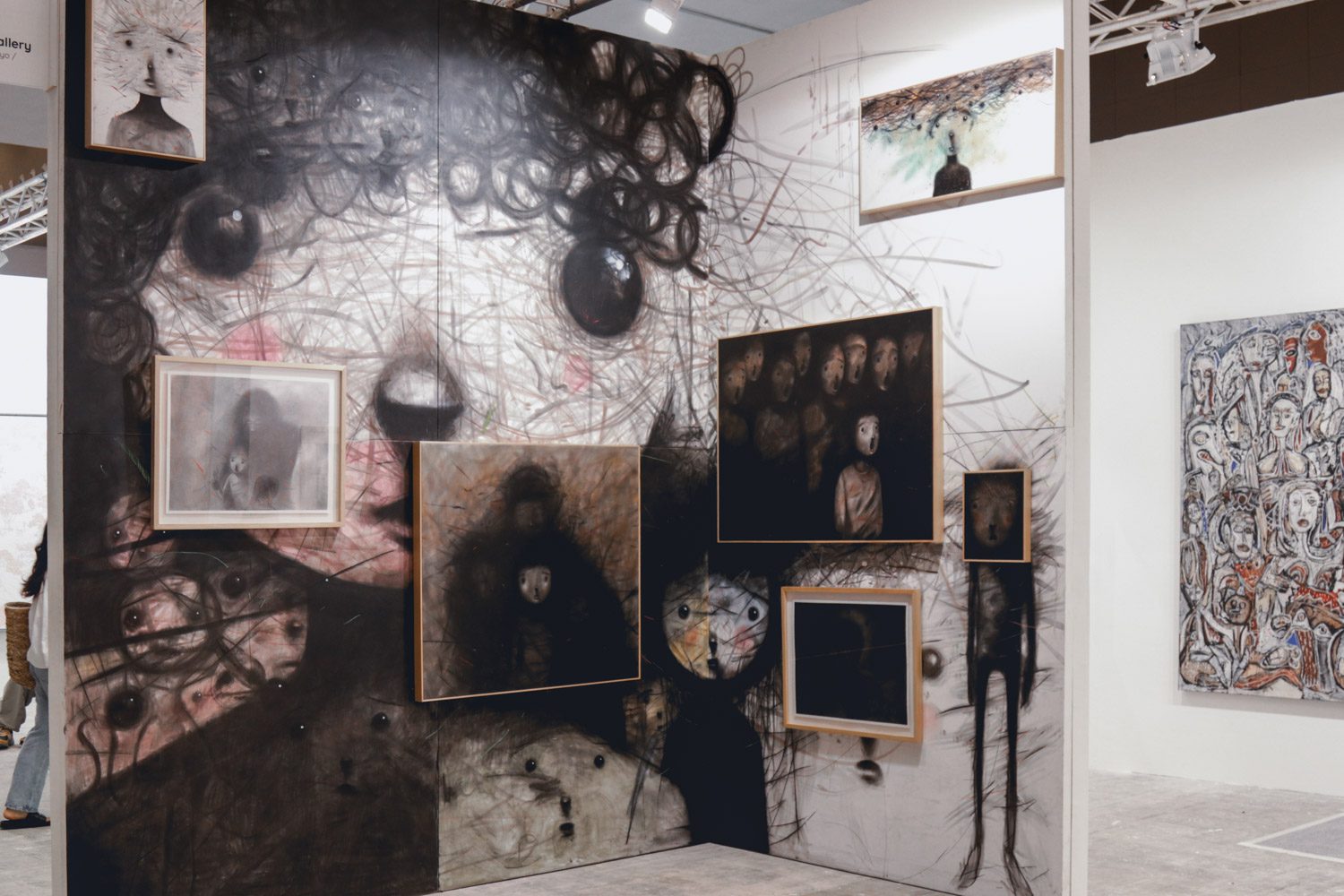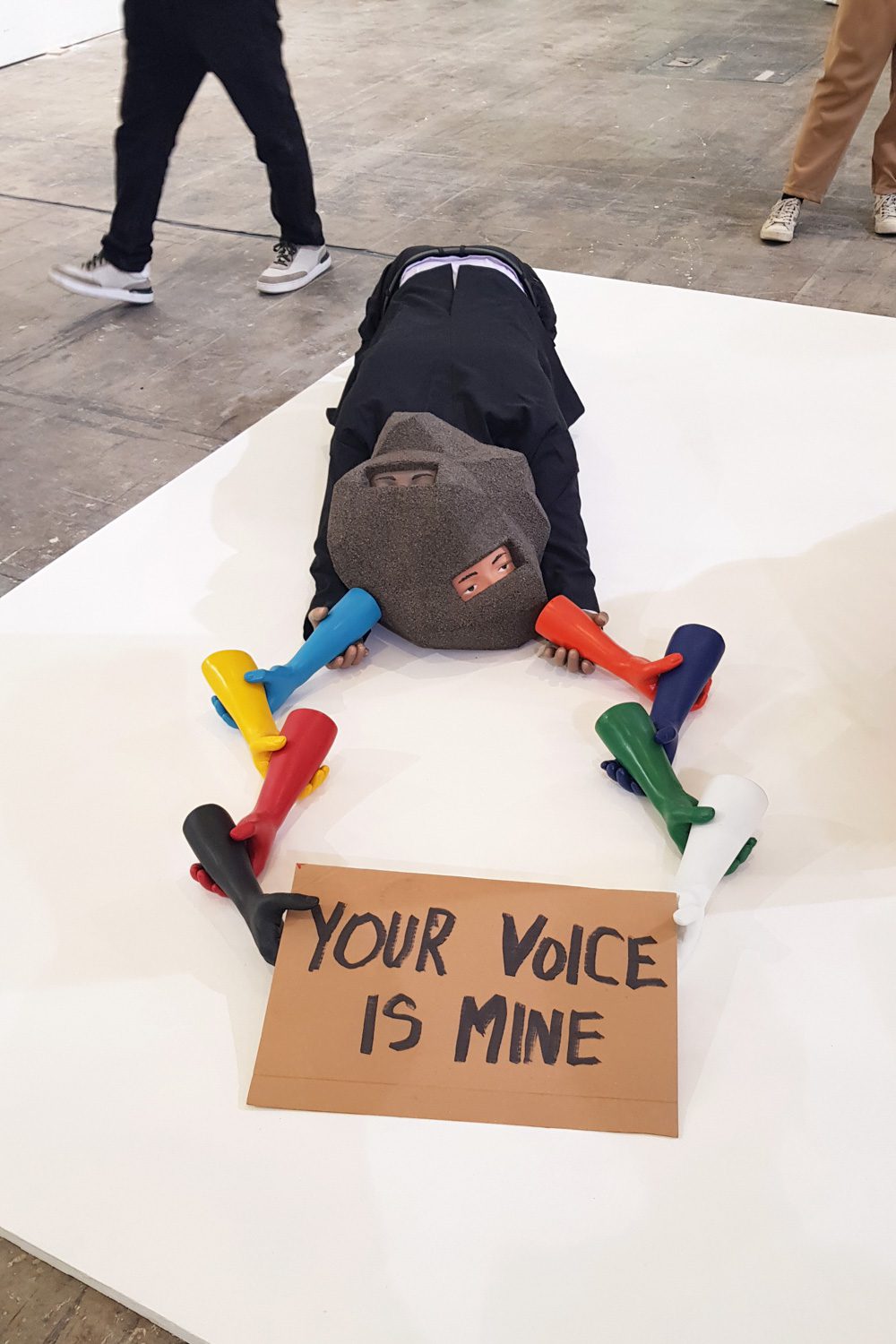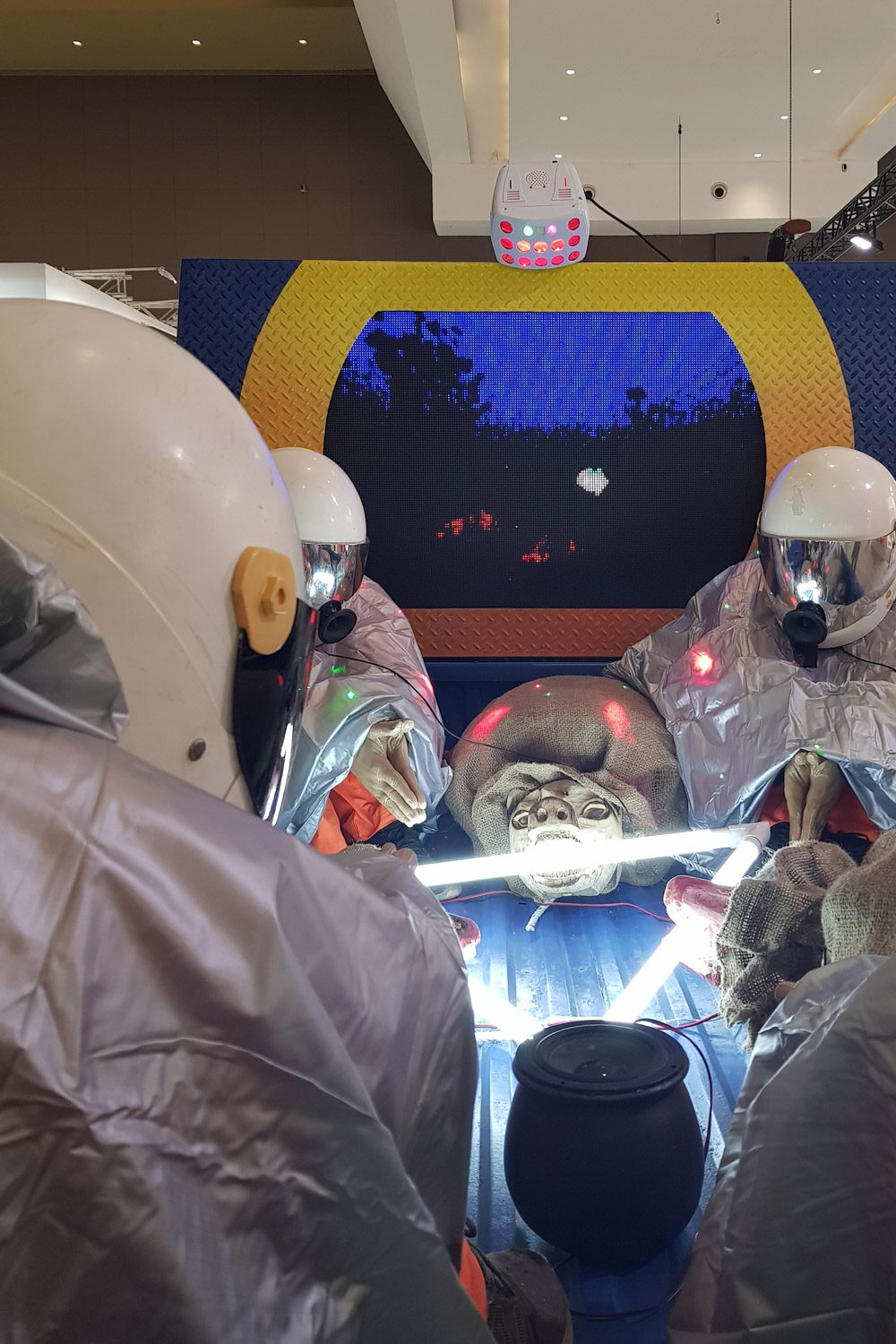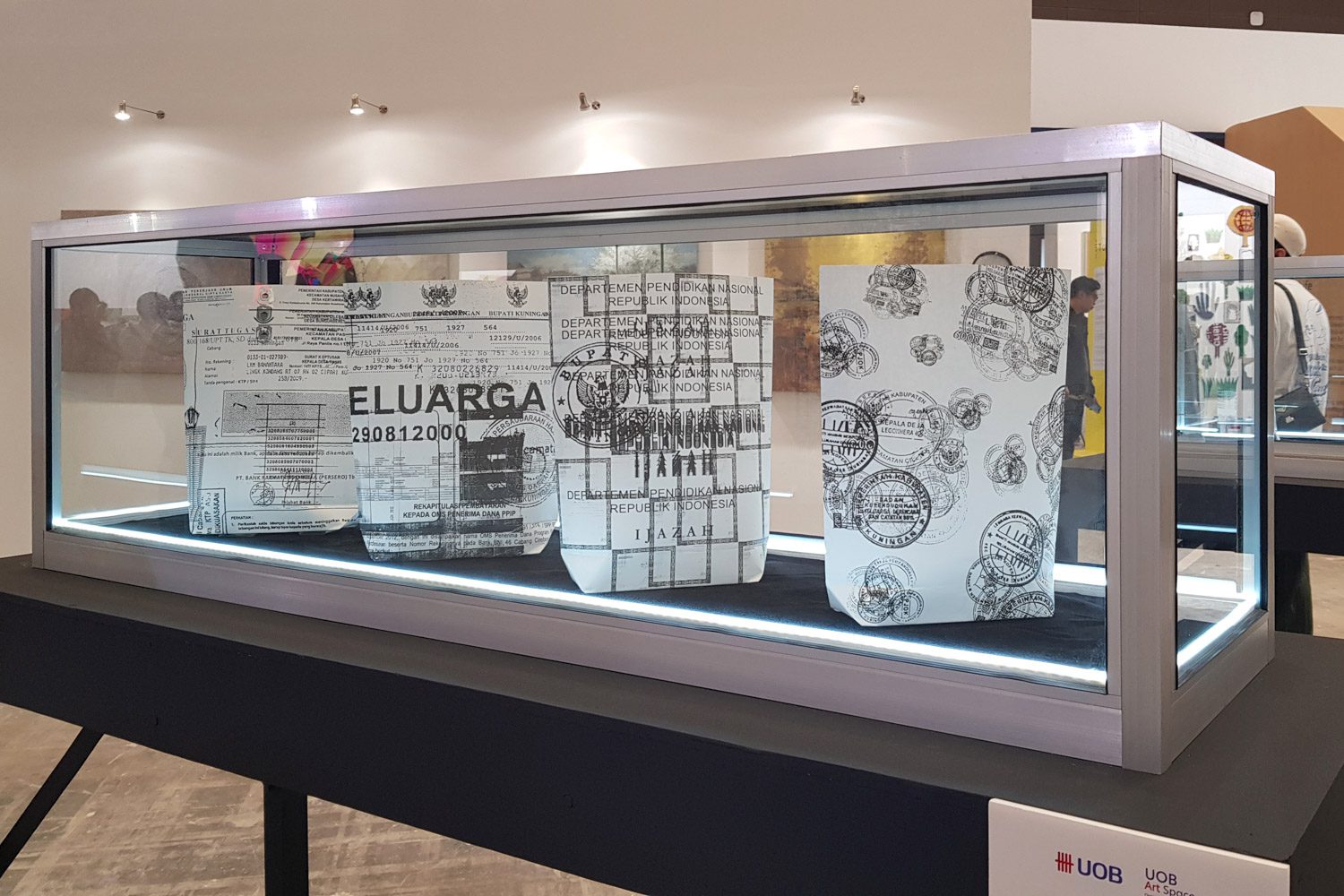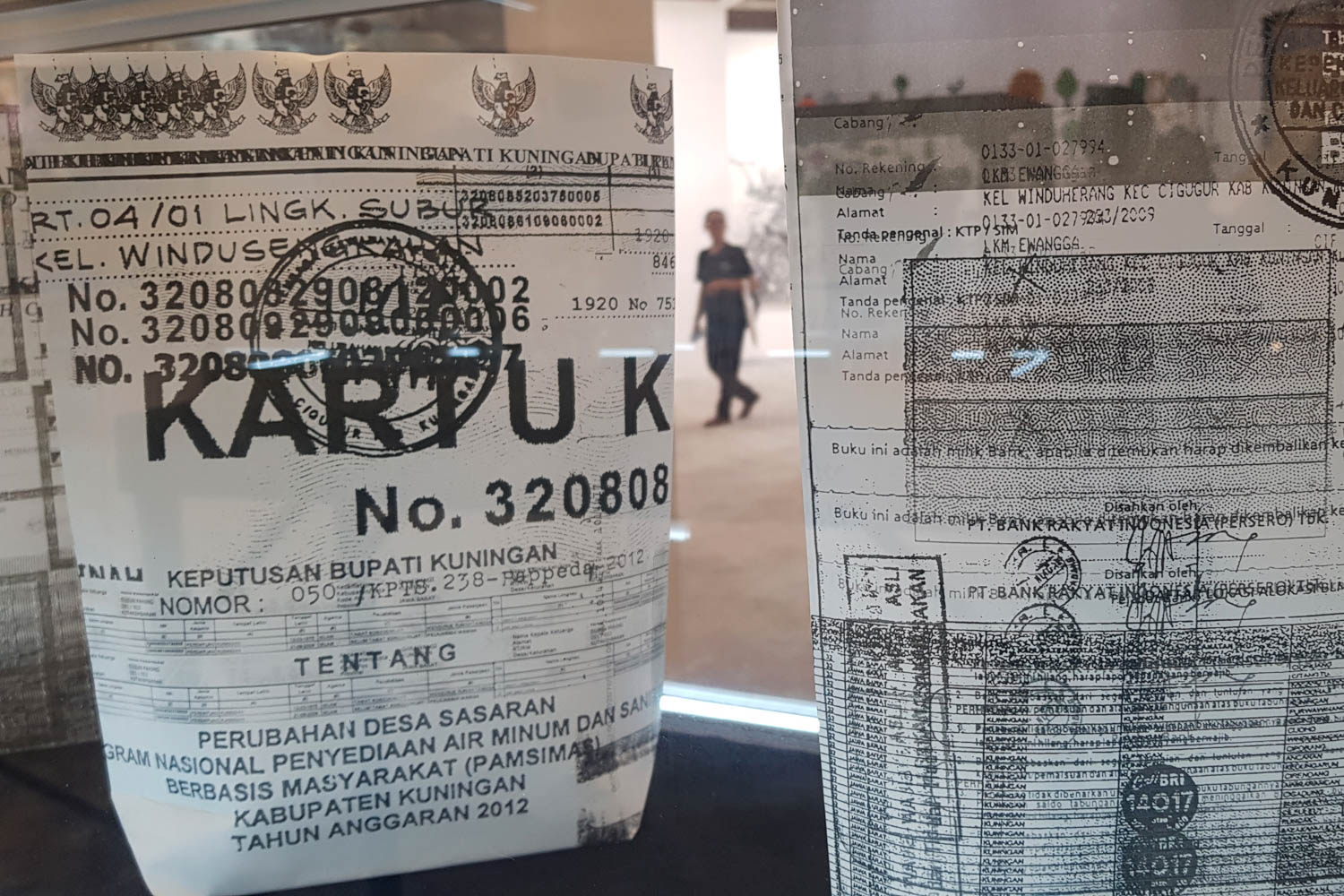REVISIT THE CONTEMPORARY ART FAIR IN INDONESIA, ART JAKARTA 2023, WITH ART4D. THIS TIME WE WILL WALK THROUGH THE ART FAIR LOADED WITH ARTWORKS FROM 68 GALLERIES FROM 11 COUNTRIES
TEXT: NATHATAI TANGCHADAKORN
PHOTO COURTESY OF ART JAKARTA 2023 EXCEPT AS NOTED
(For Thai, press here)
The thirteenth Art Jakarta was as spectacular as ever. This year, the contemporary art fair in Jakarta, Indonesia, moved its venue to the larger JIEXPO, or Jakarta International Expo. The fair welcomed 68 local and international galleries from Thailand, Malaysia, Vietnam, the Philippines, Singapore, Taiwan, China, Japan, Australia, and Russia. Evidently, the ubiquitous neon yellow representing this year’s fair didn’t fail to grab attention, a perfect successor to the bright pink that was used to symbolize Art Jakarta 2022.
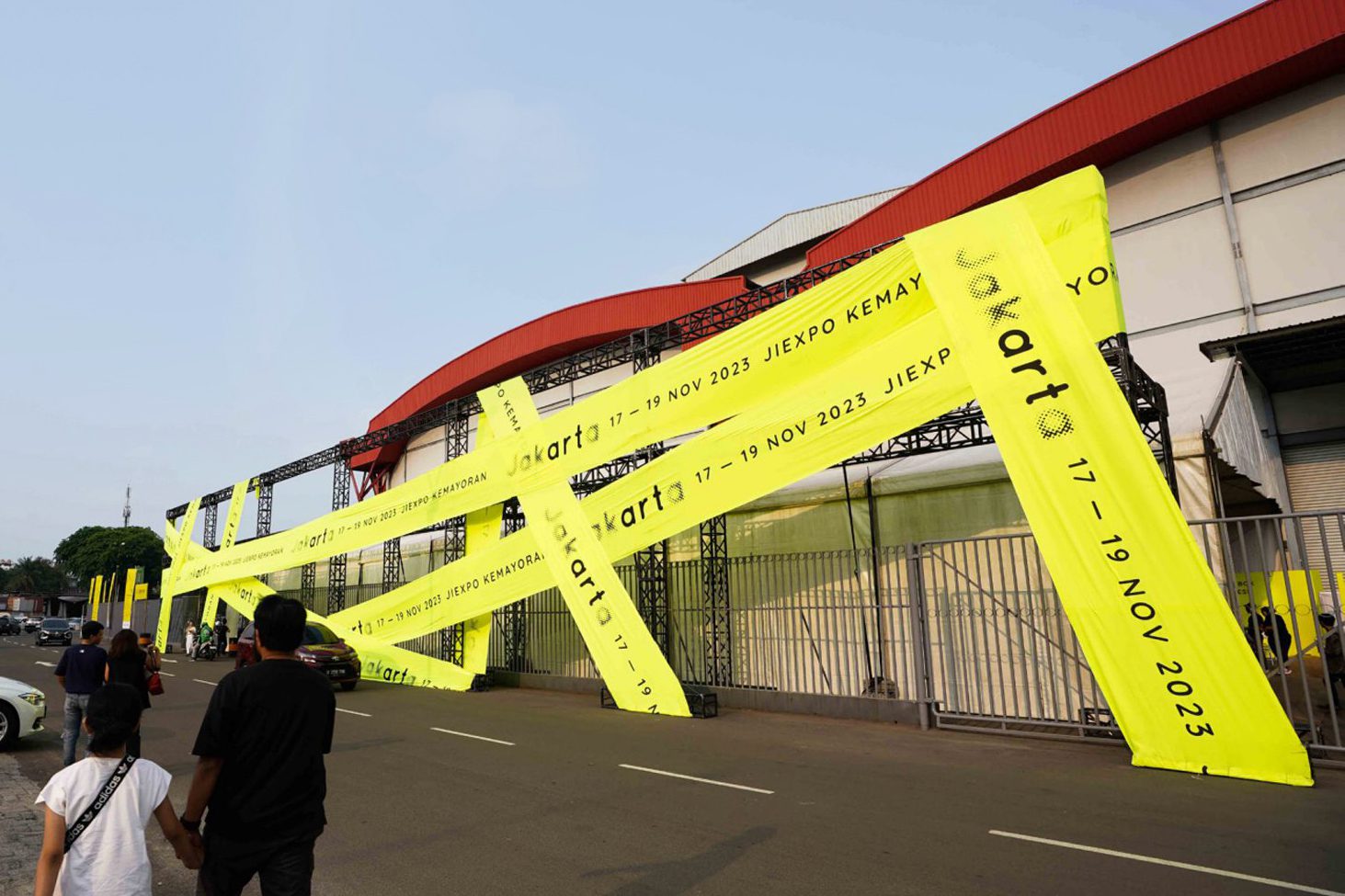
For those who are unfamiliar with Indonesia’s art scene, you’d be surprised to know that the country has long been home to a large number of artists and art collectors from Southeast Asia. Indonesia has a strong art community of young and veteran contemporary artists who have all settled and thrive in Yorkyakarta, the town with almost as many diverse art destinations as the country’s capital city. During our trip to Indonesia, art4d had a chance to visit galleries near the hotel where we were staying. And we’re telling you now that if you’re an art lover, this is one of the places to be. The highlights of this year’s Art Jakarta are numerous. Along the route to the fair, we encountered colorful installations that captured our attention, prompting us to stop and read the descriptions to ensure our interpretation and understanding of the messages were conveyed.
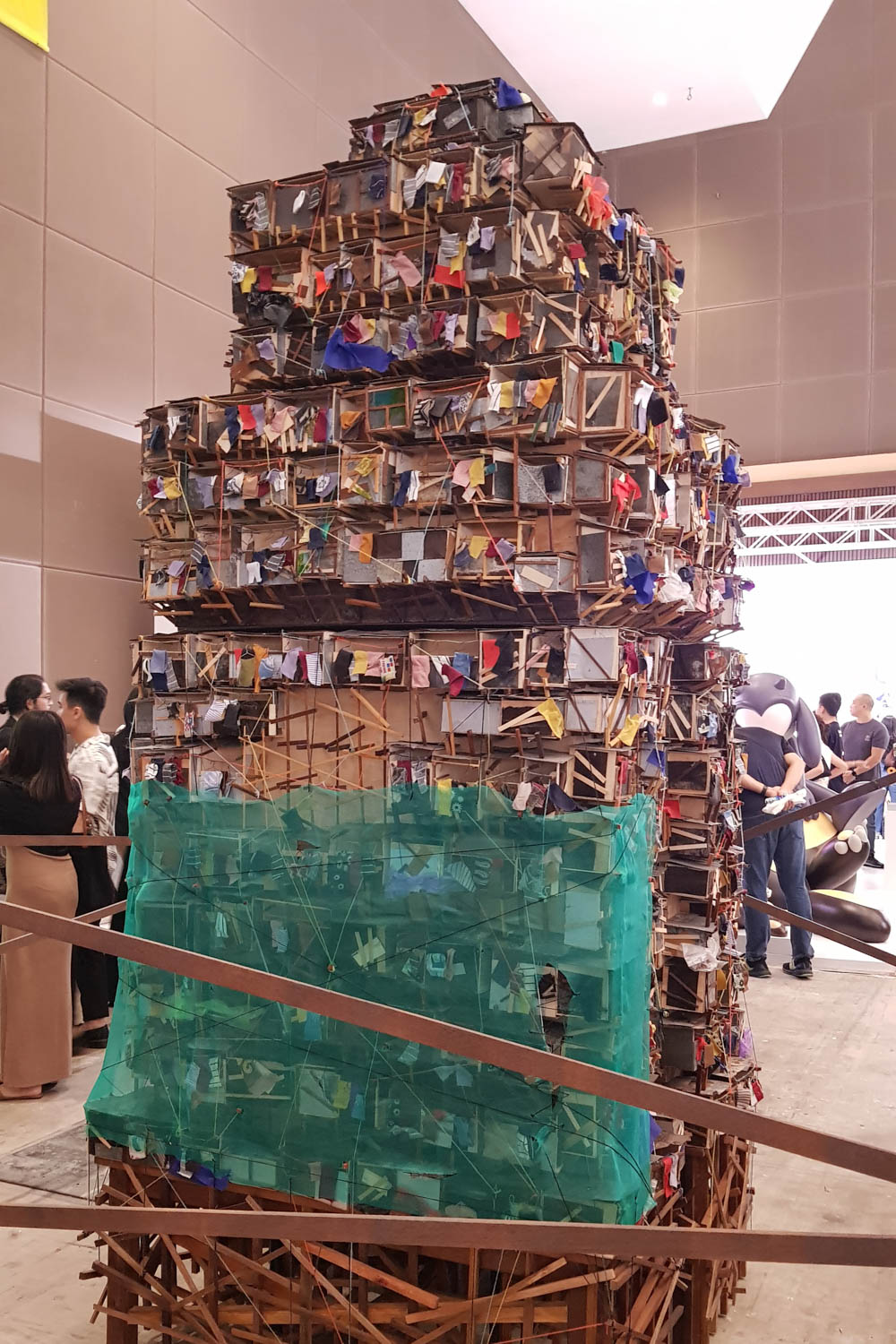
Photo: Nathatai Tangchadakorn

Photo: Nathatai Tangchadakorn
This year’s lead partners, Julius Baer (Julius Bar), UOB, Bibit, and so on, admirably managed to curate works and spaces that were not only fitting to their businesses and corporate identities but did so without forfeiting the spirit and overall ‘vibe’ of the fair. Treasury, an Indonesian financial application, presented a work that directly and interestingly asked viewers the question, ‘Is “This Artwork” in the Room With Us Right Now?’ British automotive brand MINI covered a Mini Cooper with Spanish moss, turning the car into a conceptual and fluffy piece of art (we’re not sure if fluffy is the right word to describe a plant, but the piece sure did look cute).


Photo: Nathatai Tangchadakorn
Now, let’s dive into some of the participating galleries. The first of the two galleries from Thailand joining the fair was Warin Lab Contemporary, which featured Testimonial Objects, a solo exhibition by Indonesian artist Maharani Mancanagara, who created replicated everyday-life objects using recycled wood. The other participant, Nova Contemporary, showcased a performance video by Kawita Vatanajyankur that looks into the subjects of feminism, labor, and technology. We saw such diverse uses of artistic mediums just from works from the two Thai galleries alone. It exemplified Art Jakarta’s role as a platform that welcomes all kinds of artistic creation and medium, from watercolor and acrylic painting to drawing, collage, sculpting, casting, and a plethora of mixed media works that employ so many original, novel techniques and methods.

One of our favorites was the photographic series by Indra Leonardi. The artist offered his artist friends to interact with and modify his photographs. One artist obliterated the background with dense color, leaving barely a trace of the original backdrop, while others contributed only small details, including one who left a shovel by a displayed photo. ‘Seri Bungkus Gorengan’ was another work that caught our attention with a bunch of black and white paper bags that looked oddly familiar. We opted for Google Translate for help and discovered that the name ‘Seri Bungkus Gorengan’ translates to fried food wrap series. It’s one of those moments that validates the ability of art and design as a universal language that can be used to communicate between people around the world, as long as they’re practical.
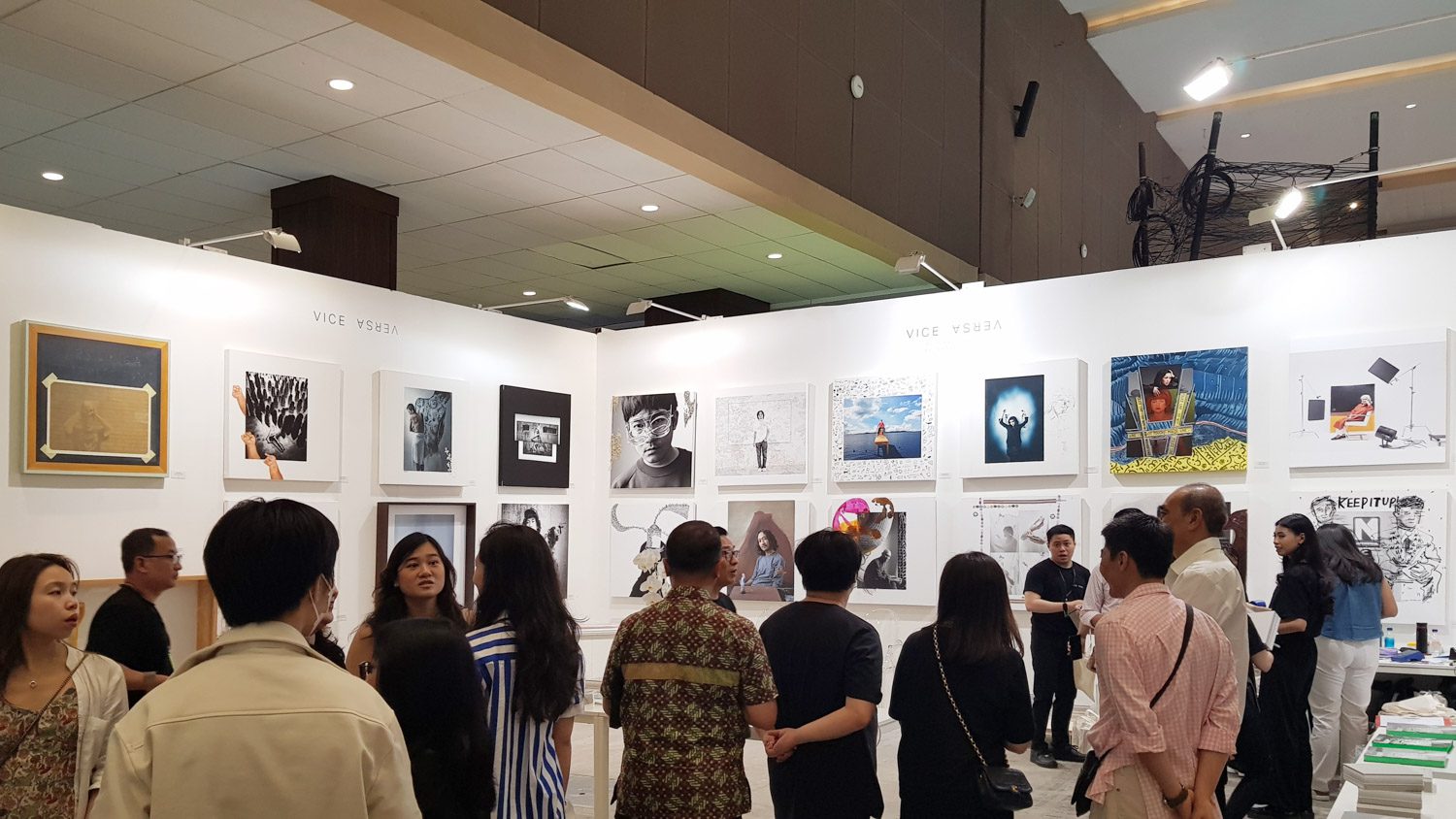
Photo: Nathatai Tangchadakorn
The scenes we observed from this year’s Art Jakarta weren’t that different from Thailand. We saw teenagers taking pictures with beautifully painted murals, and we saw people who came to the show for fun and out of interest, and we saw collectors looking for something to buy. What sets Thailand apart from what Indonesia has with Art Jakarta is that it still hasn’t been able to create a space or event that can put together an art fair of such scale that can gather works of this level of diversity and provide access to this large number of artists. And if this were to happen in the future, the next important question everyone involved has to answer is: how will the Thai general public (not just one group of people) feel about paying a THB 300 fee to view art?
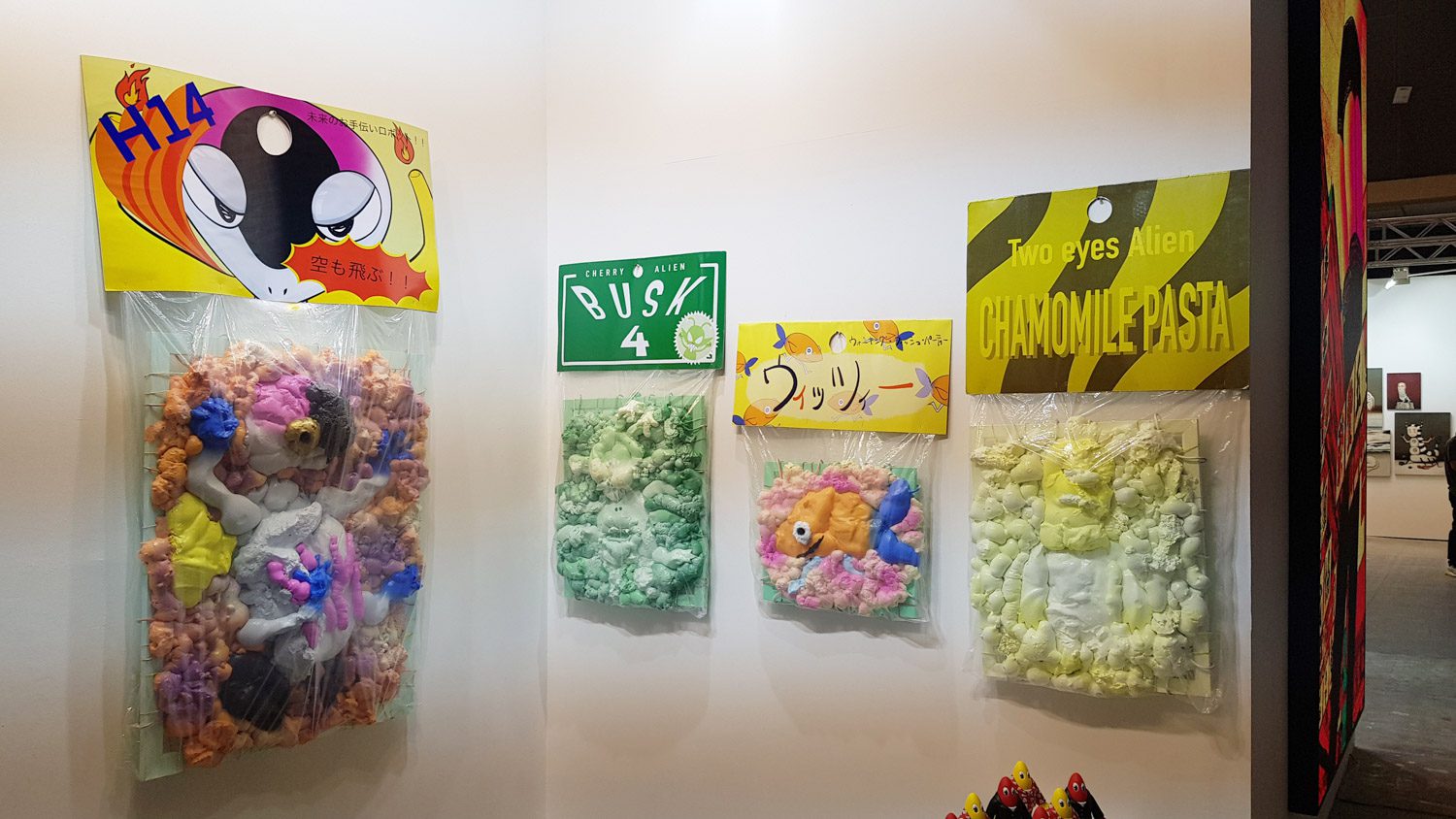
Photo: Nathatai Tangchadakorn
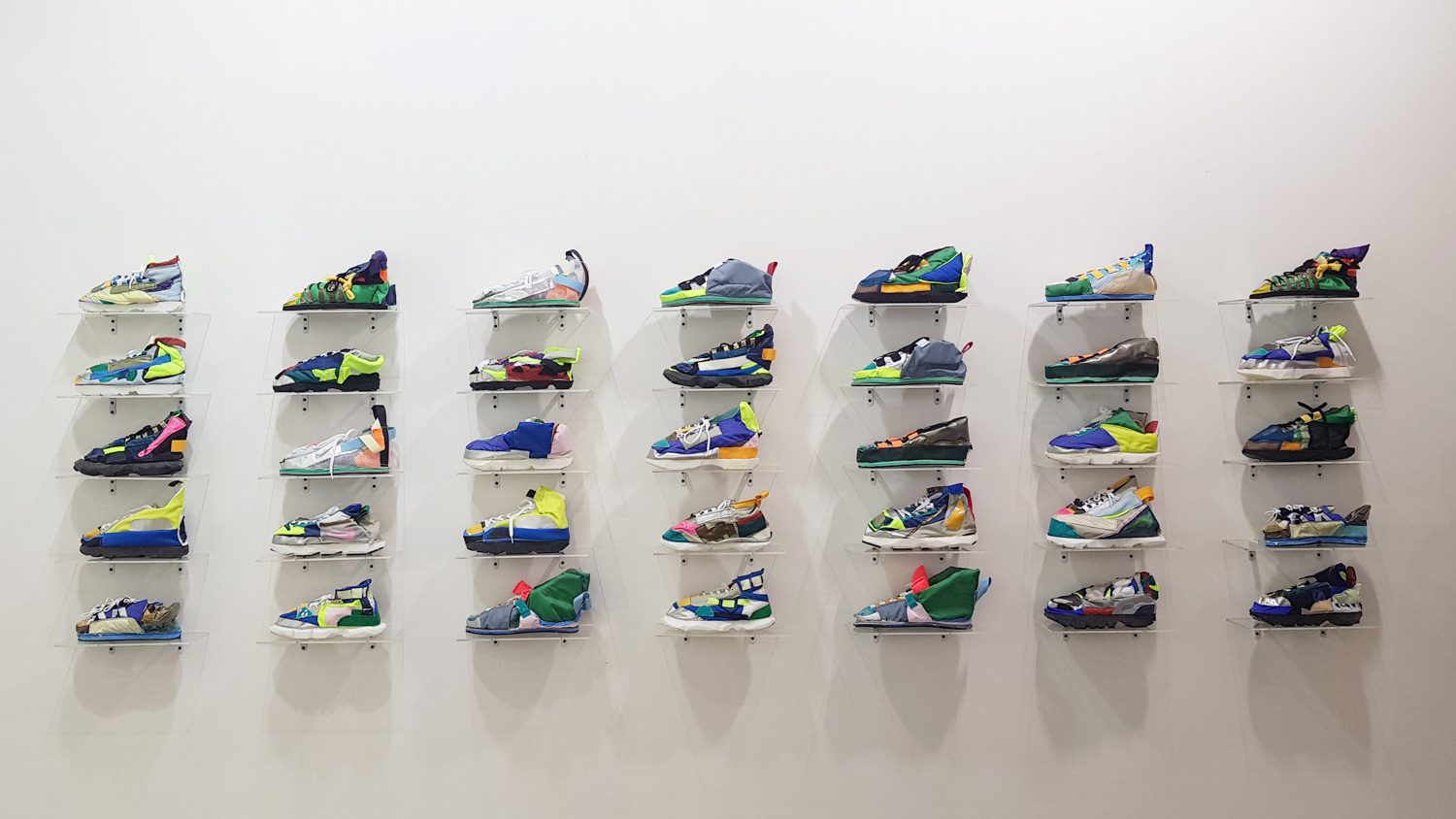
Photo: Nathatai Tangchadakorn

Photo: Nathatai Tangchadakorn
There is no such thing as right or wrong when it comes to art. That much is true. But that doesn’t mean that art cannot be improved for the sake of development. Not only does the statement apply to the creation of artwork, but it also pertains to the evolution and development of the art industry and community in Thailand, not just as a soft power but as a universal language.

Photo: Nathatai Tangchadakorn

